Restoring Detroit’s Tree Canopy
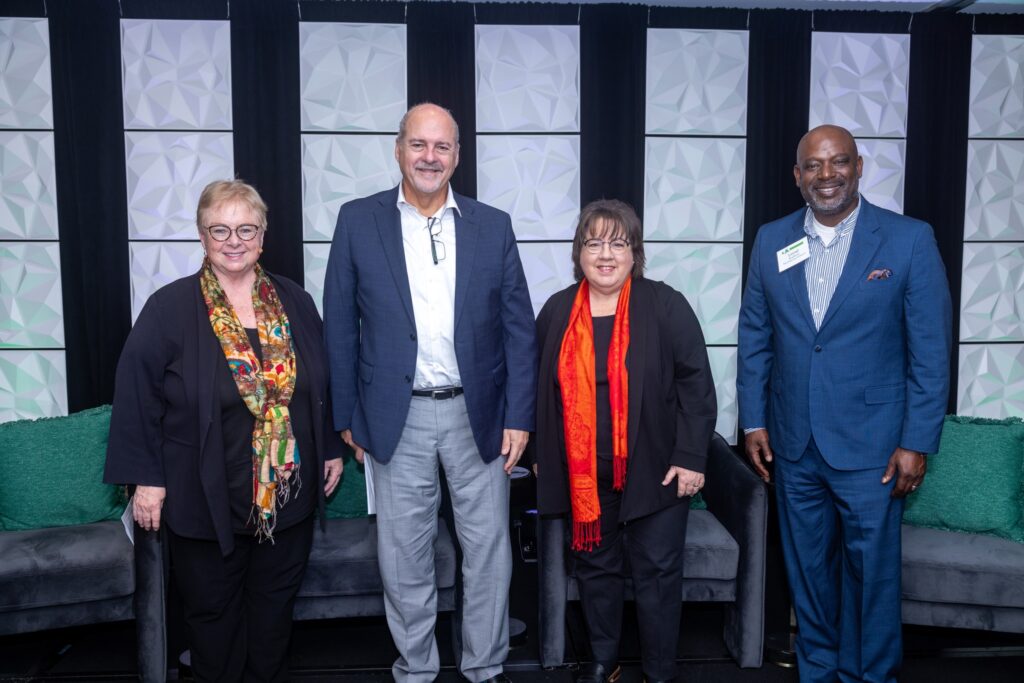
Detroit was once known as the “city of trees,” but disease, invasive insects, and budget cuts over time have decimated our area’s distinctive tree canopy. But efforts are underway to replenish trees while also providing job training, green spaces, education, and community engagement. On Oct. 31, 2024, Sustainable Business Network Detroit hosted an informative discussion sponsored by the Fred and Barbara Erb Family Foundation regarding these efforts and how restoring tree canopy benefits individuals, neighborhoods, businesses, and the economy. The panelists were: Lionel Bradford, president and executive director, Greening of Detroit, a nonprofit focused on enhancing the quality of life for Detroiters by planting trees, providing job training, and involving youth in the education of the natural environment. It involves Detroiters in the process through community engagement, green spaces, education, and jobs. Maureen Donohue Krauss, president and CEO, Detroit Regional Partnership. DRP works to serve as a single point of contact for information, connection to services, incentives, and data for businesses who want to locate or expand in the 11-county Southeast Michigan Region. Robert Riney, president and CEO, Henry Ford Health, and leader of HFH’s $4 billion Destination: Grand initiative. The project includes a $2.2 billion expansion of HFH’s Detroit campus anchored by a new state-of-the-art hospital facility that will span 1.2 million square feet. It includes a 20-story patient tower, with three floors dedicated to providing intensive inpatient physical medicine and rehabilitation in partnership with the Shirley Ryan AbilityLab and its own Central Energy Hub, making it one of the largest fully electric-capable hospitals in the country. The event was moderated by Terry Barclay, president and CEO of Inforum, and chair of SBN Detroit. Some of the takeaways: The case for tree canopy Lionel: Growing up in Southeast Louisiana – which is very hot – you quickly learn the value of a tree. It’s also a sportsman’s paradise – We did a lot of hunting, fishing, and camping, and I developed a great appreciation for the environment and its value. I also love people. The work that we do is about people at the end of the day, so when we do this work it’s to build community and neighborhoods. We try our very best – changing landscapes and lives is our motto. When someone has been incarcerated for 20 years and needs a second chance, they can come through your program – the Detroit Conservation Corps – and they can be trained and support their families. You can train people to put trees in the ground and maintain them. Maureen: Part of my role is to inform people that economic development is more than just a new factory in your town, more than just a tax abatement. It’s creating an environment that both people and companies want to be in. Sixty percent of our projects are from international companies – when people come here for the first time, they have expectations of what a first-class city looks like… Think about Paris and its phenomenal tree canopies. People want that here. I did a little research before this event: Homes with trees sell two days faster and for 15% more than homes without. Tree value increases with age – the cost of trees has 100% payback. Three properly placed trees can reduce air conditioning by 56% and reduce home heating bills by 10% by serving as a windbreak. Bob: You may think what does a healthcare system have to do with tree canopies? HFH is absolutely committed to increasing the health of communities – the role that hospitals and doctors play is about 20%. We don’t underestimate the power of that 20%, but true health – meaning how long people will live and have a high-value life – is a partnership of healthcare, policy, and environmental factors – which are huge. You may have seen that the biggest determinant of your health is the ZIP Code that you live in. You need to have fabulous healthcare, access to it, economic security, environmental security, and food and nutrition security. At HFH we need to be a population health company – we pick and choose how we should make our mark and one of the things we believe in is the power of the tree. We have to walk the talk. The economic benefits of tree canopy Maureen: Our organization has three pillars: market, grow, and support. It’s so much better now. People are curious to hear about Detroit and see what’s happening. Talent is No. 1 – we have the second-highest amount of engineers in the country and have experienced manufacturing talent. As one of my teammates says, it’s workforce, weather, and water. When you talk about climate change, Michigan will be in the top five least affected. The right amount of tree canopy and how trees are sourced Lionel: American Forests did a study and determined that a city the size of Detroit should be at 40%. Right now we’re at 26%. We lose about 2,000 trees a year, so those have to be taken into account. We get most of our trees from New York and Indiana and, more recently, Wholesale Tree Inc. in Northern Michigan. More importantly, we’re growing our own trees now – running the Walter Meyers Nursery in Rouge Park, which is owned by the city. We’re very intentional about turning into a full-fledged operational business. Last year, we harvested our first set of trees. We have lost a lot of trees over time, and the reason we have lost a lot of those is because the city lacked the resources, and dead trees were not removed and were taken down by storms. This administration has done a great job by taking trees down when dead and dying. Working with DTE has been quite thrilling – they have given financial support to planting trees but also to making sure that the next generation of environmental stewards are trained by supporting our Green Corps summer programs and also the tree
This Month’s Message from Terry Barclay, SBN Detroit chair and CEO of Inforum
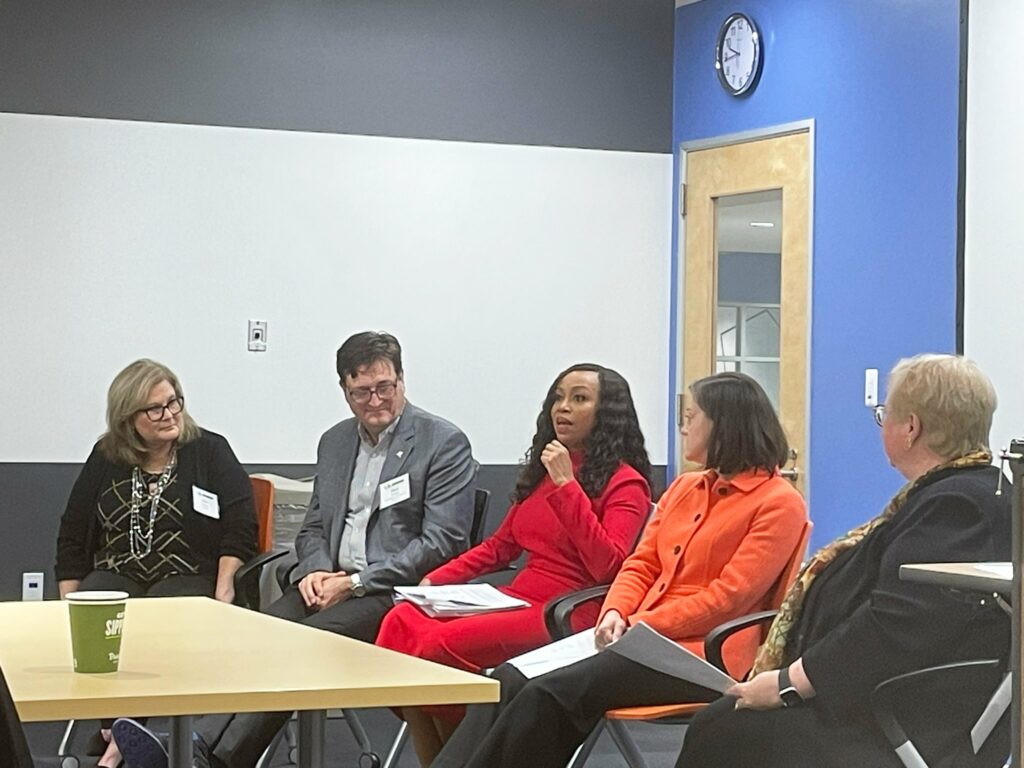
On Oct. 31, SBND hosted a panel focusing on business and sustainability in the Great Lakes region. The event was a collaboration with the Council of the Great Lakes Region and featured Shanelle Jackson, senior manager, LyondellBasell; Edna Lorenz, energy director, Corewell Health; Mark Schrupp, executive director, Detroit/Wayne County Port Authority; and Lillian Woolley, senior chemical engineer, Fishbeck. It was a fascinating discussion, and I encourage you to read the story here. Before the panel discussion, Colin Bird, counsel general of Canada in Detroit, spoke about how Canada and the U.S. work together on issues that include the environment, maritime trade, and stewardship of the Great Lakes. In Michigan, we are more aware of this than most in the U.S., but some of the specifics were new to me. Some examples: In 2022, Canada was the U.S.’s largest trading partner in goods and services. About 80% of Canadian goods exports to the U.S. ‘feed’ American supply chains for final goods. According to U.S. trade data, in 2022, bilateral trade in goods and services was US$914.3 billion, representing over US$2.5 billion worth of goods and services crossing the border every day. The joint stewardship of the environment is a cornerstone of Canada-U.S. relations, from air and water quality to wildlife management. This includes at least 50 federal bilateral arrangements, more than 100 arrangements at the state and provincial level, and the Boundary Waters Treaty of 1909. The Canada-U.S. Joint Action Plan on Critical Minerals Collaboration and the Memorandum of Understanding (MOU) expand energy cooperation between the two countries are some examples of collaborative initiatives. Canada’s 2023 federal budget allocates $650 million over ten years to support monitoring, assessment, and restoration work in key freshwater ecosystems, many of which are shared by Canada and the US. Of this total, $420 million will go towards restoring and protecting the Great Lakes, complementing significant U.S. efforts in this regard. On September 18, the University of Michigan announced an award of $5 million from the National Science Foundation to establish the Global Center for Understanding Climate Change Impacts on Transboundary Waters, comprised of U.S. and Canadian universities and Indigenous representatives. McMaster University will lead the Canadian side, with $3.75 million in funding provided by the National Science Foundation. More trade statistics specific to Michigan can be found here. Be sure to subscribe to our newsletter for regular updates on sustainable business practices in and around Detroit.
Automotive Leaders Discuss Navigating the Shift to Mobility
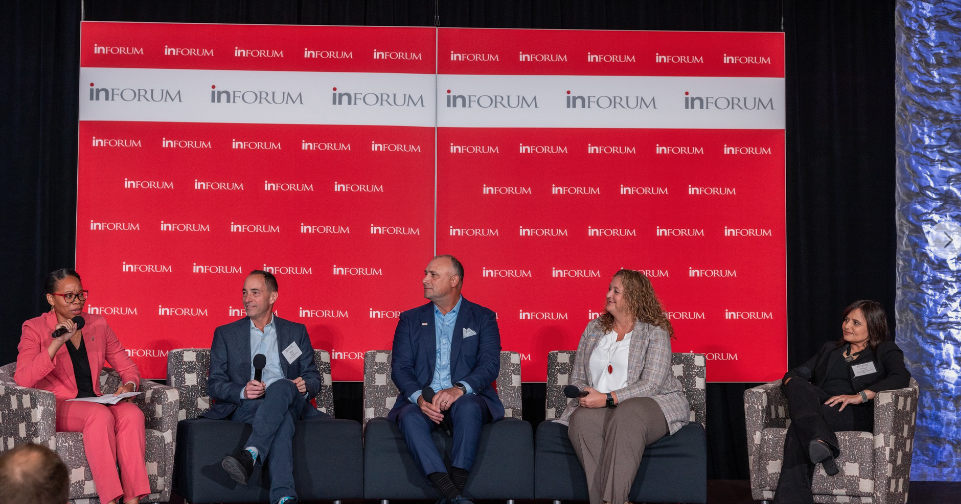
Automotive always has been a technology-driven industry, but in the next ten years, there is likely to be more change in the industry than there has been in the last hundred. And much of that change will be taking place in Michigan. That shift – which moves automotive toward becoming a more sustainable industry – was the topic of a Sept. 15, 2023, breakfast, “Navigating the Shift to Mobility – With Detroit as a Leader,” hosted by Inforum, a nonprofit focused on accelerating women’s careers. The themes included diversity, new opportunities that come with and from young and emerging talent, the power of partnerships, and the future of mobility. Panelists were: Aruna Anand, President and CEO, Automotive Group Sector; head of architecture and networking, Continental North America Kristen Tabar, group vice president, Advanced Mobility Research & Development, Toyota North America Paul Thomas, president, Mobility in Americas, Bosch (effective Jan. 1, 2024), and Alan Wexler, senior vice president, strategy, and innovation, General Motors Justine Johnson, chief mobility officer for the State of Michigan, moderated the discussion. Our takeaways follow: Thomas: When you look for talent, look for talent that looks different from you. Different countries, beliefs, and perspectives, you have to look for talent that has diverse opinions on solutions. The world isn’t as simple as you think it is sometimes. Taber: When students look for a job, remember that it is not a one-and-done deal. You may think this is your passion and you work in this space, but what we see is that people evolve. That cross-pollination and common way to move throughout your career and experience different aspects of this new mobility solution. It’s a completely different landscape that requires different skill sets and backgrounds. Anand: We need to see ourselves in those positions that we are aspiring to be. If you do not have representation, then you don’t know what it’s like and you don’t have the confidence to do something because it is not done. We need to increase the pipeline. Then you understand the reasons why you can’t do this or what else you can do to fix it. Wexler: We see a world with zero crashes, zero emissions, zero congestion. Taber: It is about the products that we put out, how we operate our businesses, and the ripple effect on our supply chains. We need very clear, measurable methods so we are using similar yardsticks. Thomas: We want to invest in communities, we invest in Detroit and the Midwest very heavily to bring mobility people into our companies. We are also always on the diversity journey. You will never know when you are done because diversity is something that you always must work on. Anand: We tend to want to be perfect before we try new things. We find reasons to not be good at things. What is stopping us? We need that coaching, mentoring, role models, all of that together to build that pipeline better. Wexler: (Talent recruitment) really starts with the “why.” … We need skillsets from other industries. We’re becoming more technology-oriented … we pioneer the innovations that move and connect people to what matters, so it’s who wants to be part of that purpose and do something impactful. Taber: We have to understand that none of us is going to be able to move the technology forward by ourselves. It is going to take partnerships that we probably wouldn’t have thought of ever before. Anand: If we can provide an environment that is flexible, then the talents will be able to grow. Thomas: The ecosystem is so large and the opportunities to do different things are available to each one of you in the room. There is so much information out there on how to get involved in mobility. Wexler: There isn’t another industry that has the same opportunity to heal the planet. Experience the full event here. Be sure to subscribe to our newsletter for regular updates on sustainable business practices in and around Detroit.
Sustainability Business Network Detroit, One Year In
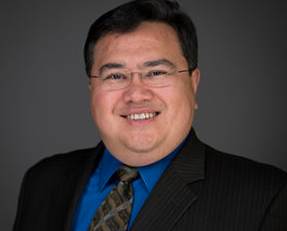
Sustainable Business Network Detroit was formed a year ago out of a study conducted by Erb Family Foundation and is helmed by Terry Barclay, chair, SBN Detroit, and CEO Inforum; Neil Hawkins, president of Fred A. and Barbara M. Erb Family Foundation; and Cindy Goodaker, VP, signature programs and communications, Inforum, along with a distinguished list of organizing members steeped in the sustainability community of Southeast Michigan. The group’s goal is to create a sustainable business ecosystem by convening a network serving as a hub for idea-sharing, programming, content, mentoring, and more – to accelerate the systemic adoption of sustainable business practices in Southeast Michigan. The primary belief is that business is a positive force for change and can and should be used as a force for good. For the past twelve months, the network has worked toward three core pillars; advancing and amplifying sustainable business practices in a centralized hub; creating urgency to activate; and articulating a sustainable way forward for the region. Here, Neil Hawkins shares his viewpoint and insights on the progress the network has made this year and the vision for the future. What is the impetus behind SBN Detroit? How did the idea arise and how was it developed? I’ve been involved with sustainability as it relates to businesses for some time and worked for Dow as their chief sustainability officer. Subsequently, Fred and Barbara Erb established the Erb Institute for Sustainable Global Enterprise more than 25 years ago at the University of Michigan. No program like this had existed in the world up until then, and it was very forward-thinking and visionary – the idea that business had a positive role to play in environmental sustainability. I came to the Erb Family Foundation as the president four years ago and at that time, we commissioned a study done by Sarah McCall – now working as SBN Detroit administrator – of what needed to be done to accelerate progress in sustainability within the region. That research was the impetus behind starting a network that would accelerate sustainability through business collaboration and progress – SBN Detroit. How do SBN Detroit’s three pillars work together to achieve its mission of mobilizing businesses and organizations to make Southeast Michigan a global leader in sustainability? Fundamentally the pillars are in place to help break down the barriers – silos. There are too many silos that exist in the region, and they prevent progress. These are silos between companies and across different-sized companies, and between companies and non-profits etc. All of those together are a barrier to making faster progress. These three areas of focus – urgency, centralization, and looking forward – are helping to tear down these silos and promote collaboration. The second statement was a fragment as written. I think it’s supposed to say: These three areas of focus – urgency, centralization, and looking forward – are helping to tear down these silos and promote collaboration. (I’m not sure my edits made that clear) A year in, what impact do you think SBN Detroit has made and is making? What is its greatest success so far? I think SBN Detroit has helped to completely change the level of dialogue within the region about sustainable business practices. I see it as a ‘before SBN Detroit and after SBN Detroit.’ We are seeing new collaboration and a lot more discussion about how we can work together to move forward, and we are seeing it on a completely different level. What specifically do you attribute this to? I think our biggest success in the last twelve months is the March 2022 event we had featuring Dr. Katharine Hayhoe on improving the dialogue about climate change. It was a remarkable event, and the timing was such that it was many people’s first foray into a public space since COVID had begun. The narrative of the event coupled with the interaction among people with like minds and like interests sparked renewed energy toward our collective goals. I also attribute our success to our steering team. I thank them for laying out a strategy and faithfully bringing people together. If the steering team works well together – and it has – we have a good shot at having continued success. What is the importance of collaboration when it comes to sustainability in this region? It is only going to be through collaboration that our region and ecosystem reach their full potential. SBN Detroit is focused on accelerating collaboration by creating opportunities for dialogue and action. We’ve accomplished this, and I see the fruits of it already. Excellent groundwork has been laid. What are your thoughts on SBN Detroit as a network? I think SBN Detroit represents many networks and is not a single network. This is still playing out a bit, and it’s a good thing. As long as we can keep companies and nonprofits and different universities and institutions involved and collaborating and working together that’s a great thing. What do you see as the primary obstacles to network formation, and how can they be overcome? The key obstacle is competition – competition between businesses, between businesses and nonprofits, between nonprofits and universities, between universities and other universities, and so on. The key thing we all have to focus on is that this is not a zero-sum game. By collaborating we make the pie bigger for everyone. There is growth here to be had and a lot of investment to come. We can all share in that growth if we are working together. This will position metro Detroit well. What do you see as the corporate-level impact of SBN Detroit? Having come from corporate, what I see through SBN Detroit is a renewed sense of group action and focus on the region, the Great Lakes, and the planet. Pre-COVID some silos existed, and then you throw in a pandemic that forces people to not even go into their workplace, and it is significantly exacerbated. We have started to create a sense of urgency and
University of Michigan President Santa Ono Expands on Sustainability Agenda at SBND event
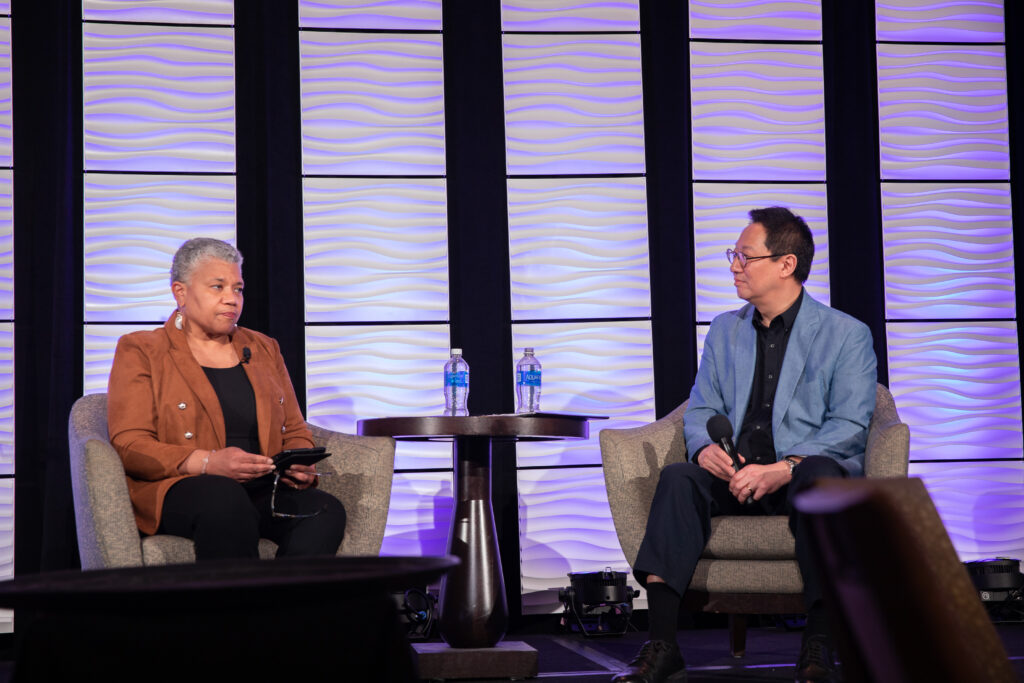
University of Michigan President Santa Ono has put sustainability and fighting climate change among his top priorities since he assumed the position in October. In addition to several programs and initiatives that are being expanded or developed, the university is now serving as the lead institution for the University Climate Change Coalition which convenes 23 leading North American universities to work toward climate action on campuses, in communities, and at a global scale. Ono spoke about his sustainability agenda for UofM at an April 5 luncheon attended by more than 250 stakeholders and business and organization leaders. The event was sponsored by the Erb Institute and hosted by the Sustainable Business Network Detroit and Inforum. Tom Lyon, faculty director at the Erb Institute, kicked off the event by saying, “As we build toward expertise on sustainability the challenge is to think globally and act locally together, and the state, the universities, businesses, and all sectors have to be involved.” John M. Erb, Erb Family Foundation chair, echoed that sentiment commenting, “We are all important stakeholders in balancing the needs of the people, planet, and economy and working toward a more sustainable future.” Working together and the need to connect the dots toward saving the planet were primary themes. Each of us is indispensable in responding to and resolving the biggest challenge our society has ever faced and solving this emergency transcends borders, Ono said. We need to come together in the form of a nexus to benefit us and all who follow us on this planet. Ono said the university benefits from strength in numbers with 800+ sustainability faculty members, 100+ student organizations, and 8,000 Planet Blue Ambassadors. He gave a special nod to students, saying, “Their passion has wowed me, and I have found that many times it’s the students who (first) identify and develop solutions.” Some of UofM’s sustainability priorities include moving to 100% renewable purchased power by 2025, building on-campus solar installations with a capacity of 25 megawatts across the Dearborn, Flint, and Ann Arbor campuses – including Michigan Medicine and athletics – and achieving LEED Platinum status for all buildings. Ono talked about the university’s historic ties with the city of Detroit and its responsibility toward it. “The university was established in 1817 at Cadillac Square in Detroit, and Mayor Duggan took me there saying that we have a great responsibility to the city, and he’s right.” On March 6, the university announced new commitments for the $250 million University of Michigan Center for Innovation, previously known as the Detroit Center for Innovation. The project is a collaboration with Stephen Ross, chairman and majority owner of Related Companies, and the Ilitch family. Ono noted that the center will accommodate academic and community programs to include three distinct types of activity—graduate education, talent-based community development, and community engagement—all in the service of economic development and job growth for Detroit. In the spirit of collaboration, Ono also pointed out that there were people attending the event from other Michigan universities and applauded this, saying, “We have our competition on the fields and courts, but getting closer to other Michigan educational institutions is very important to UofM. We need MSU to make advances in agritech, and Wayne State University is a critical component to making advances in the city. We all need to work together and we are starting to do more of that now.” Following his speech, Telva McGruder, Chief Diversity, Equity, and Inclusion Officer for General Motors Co. and member of the advisory board for the UofM School for Environment and Sustainability, moderated a Q&A. Below are some of the key questions and takeaways. McGruder: What is your top priority as president of the University of Michigan? Ono: Addressing climate change. I’ve been very vocal that this is my number one priority. Michigan has to be a leader here. And that is the wish of the collective voices of the university as well. Students are actually pushing me, and I appreciate that so much. I have told them to hold my feet to the fire. McGruder: Regarding the notion of connecting the dots, how do you as a university leader – and how do leaders in other organizations – bring expertise together for progress? Ono: I think the different pieces of the puzzle that exist illustrate opportunity. One part of the secret sauce at UofM is that each director has the autonomy to dream and be bold. Now, we need to collaborate and form connections around these ideas. The faculty and leadership and students have wowed me with their collaborative spirit. McGruder: How can companies and organizations around the state connect with the efforts of the university? Ono: We are working on making a “front door” more clear. We are going to invest and Identify someone to knit it together and act as the gatekeeper to reduce the barrier to communication inside and outside the university. McGruder: Progress sometimes means people changing ways of doing things and letting go so that we can move forward. What are your thoughts as we move forward toward carbon neutrality on some of the things we have to encourage communities to let go of? Ono: It goes both ways. Trust is a critical point. Leaders have to earn trust. We as a university have to go into communities knowing that we have as much to learn from them as they do from us. We as a university have made mistakes along the way, and so have other institutions and companies. Addressing that truthfully is a prerequisite to going into communities and working together. McGruder: When it comes to funding, how do we help decision-makers and leaders within all sectors understand the need to spend on sustainability efforts? Ono: Addressing the climate crisis is not a bottom-line budget issue it’s a social responsibility. And what is the point of a strong financial standpoint if there’s no planet to exist on? A recording of the complete program can be found here: https://vimeo.com/815068547 Be sure
Cumulus Holds Global Design for Adaptation Conference in Detroit
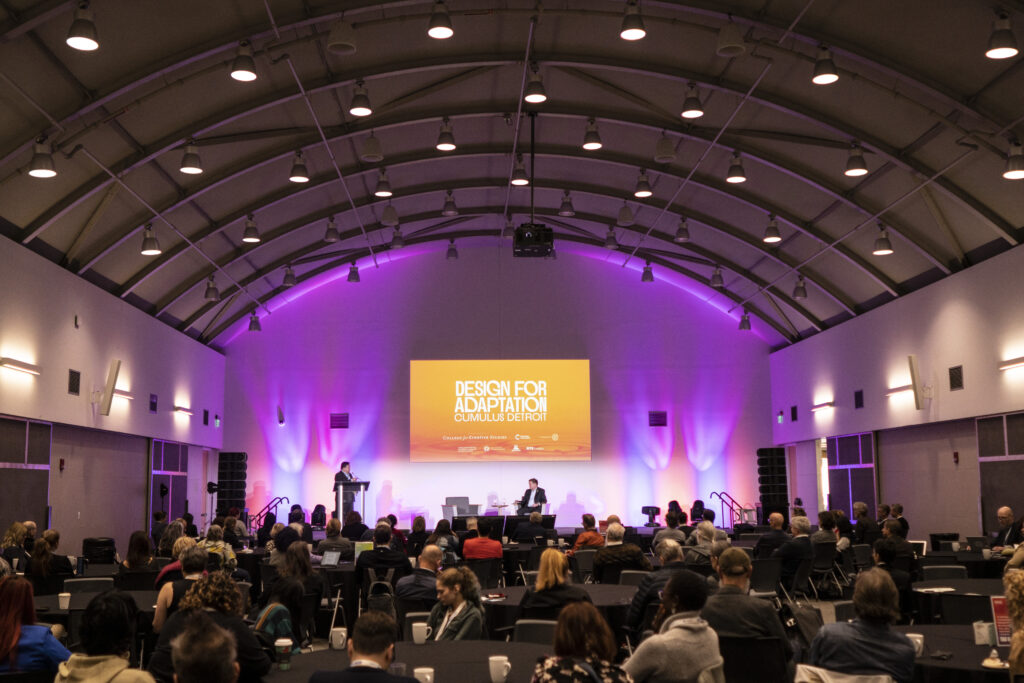
Cumulus, a global association of art and design education and research, held its annual conference, Design for Adaptation in Detroit Nov. 1-4 at the College for Creative Studies. This marks only the second time in its 30-year history that the conference was in North America. Cumulus connects 350 member institutions across 63 countries to exchange knowledge and best practices to elevate the positive role of designers and artists in creating sustainable and humane futures for all. “If there is one thing we know, we are stronger together,” said Terry Barclay, SBN Detroit Chair and CEO of Inforum, in a Thursday afternoon welcome address. “I think we have a common sense of urgency to break down silos that slow collaboration and this conference is certainly about that.” SBN Detroit was a conference sponsor. “This international conference has such diverse participation,” said Neil Hawkins, president of the Fred A. and Barbara M. Erb Family Foundation, who moderated a keynote address. We have creative designers hoping to change the trajectory of climate disasters. We have local Detroit leaders demanding justice for people already suffering impacts. We have great minds from all corners of the earth here in Detroit, which in many ways can be called ground zero for the climate crisis.” To that end, he noted that metro Detroit has endured serious local flooding from three 500-year rainfalls in the last ten years, holds 25% of the world’s surface freshwater in the great lakes, and the state is fittingly named after a natural resource – Michigan meaning “big lake.” Ian Lambert, co-chair and submissions chair for Cumulus 2022 and also dean of graduate studies at the College for Creative Studies, said, “As the only UNESCO-designated city of design in the U.S., Detroit has an incredible history of makers and manufacturing and design, so it’s fitting that Cumulus was held here. And it’s huge for Detroit.” The conference – focusing largely on the issue of climate change, automation, and income inequality – explored the role designers play in fostering adaptation through a wide range of approaches, methods, visions, and experiments. In that vein, the mission is to think ahead to catalyze ideas to reduce vulnerabilities and foster resilience for communities. Noting that the world is 1.2 degrees Celsius warmer than at any point in human civilization and that 300 billion tons of carbon have been added to the atmosphere by humans, keynote speaker Mikko Ollikainen, head of the Adaptation Fund, said to the audience of designers, “You are the minds to shape the future and you have your work cut out for you. … “We are facing an increasing arrival of uncertainty and must be prepared for things we do not expect and prepared to withstand shocks.” Land use and its relationship to climate change and inequity were the focus of several panels. Anika Goss, CEO of Detroit Future City, said in her keynote, “When we look at the cities in Detroit and around the world that are hit hardest by climate change, it’s always the poorest and the brownest neighborhoods.” She pointed to a community on the lower east side that suffered stormwater flooding as an example, saying, “From an economic standpoint these families continue to lose value in their homes and property simply because they live in a neighborhood with poor infrastructure.” The Eastside Community Network is working to put residents in charge of enhancing their neighborhoods toward resiliency. President Donna Given referenced its LEAP Sustainability Fellowship saying, “When you give someone a small amount of money and the responsibility to build a better space it’s amazing what that can do to a neighborhood.” The fellowship is a training and development program where fellows develop community projects, apply for grant funds to support them, and then implement them with the help of the community. To that end, Jerry Hebron, executive director of Oakland Avenue Urban Farm, shared her story of growing up near Motown in its heyday, leaving the city, and then returning in 2005 to find it riddled by crime and decayed. She became an activist and was charged to find out what needs the community had. “I knocked on doors to collect information and found that housing and food were the residents’ most important needs.” The high vacancy rate and open land equaled opportunity. The community wanted a garden and they built one – 20×20 feet. Today, 14 years later, they are farming 3.5 acres, a farmers market, youth programming, and more. “The community reclaimed that land and worked together to change their neighborhood.” Linking this back to design, Lambert and Leslie Tom, chief sustainability officer at the Charles H. Wright Museum of African American History, presented a collaboration involving the repurposing of three dying trees on the museum’s property. Instead of letting the trees end up in a landfill, The Wright and the Center for Creative Studies repurposed the trees and created a curriculum around co-design for sustainability, climate justice, and African American material culture, out of which came a narrative around how two neighbors – a museum and an art school – set a precedent for climate justice art. “One of the pieces a student created spoke to land use in Detroit by combining window panels from an abandoned home and the repurposed timber to tell the story of decay and rebuild,” Lambert said. There is no doubt that the complex consequences of climate change have pushed the need for community resilient strategies to emerge and thrive in the face of change. About the role designers play in this, Ollikainen said, “How designers see the world and work has a profound impact on building sustainable solutions. You have the vision, and you have the skills to turn that vision into reality.” Be sure to subscribe to our newsletter for regular updates on sustainable business practices in and around Detroit.


